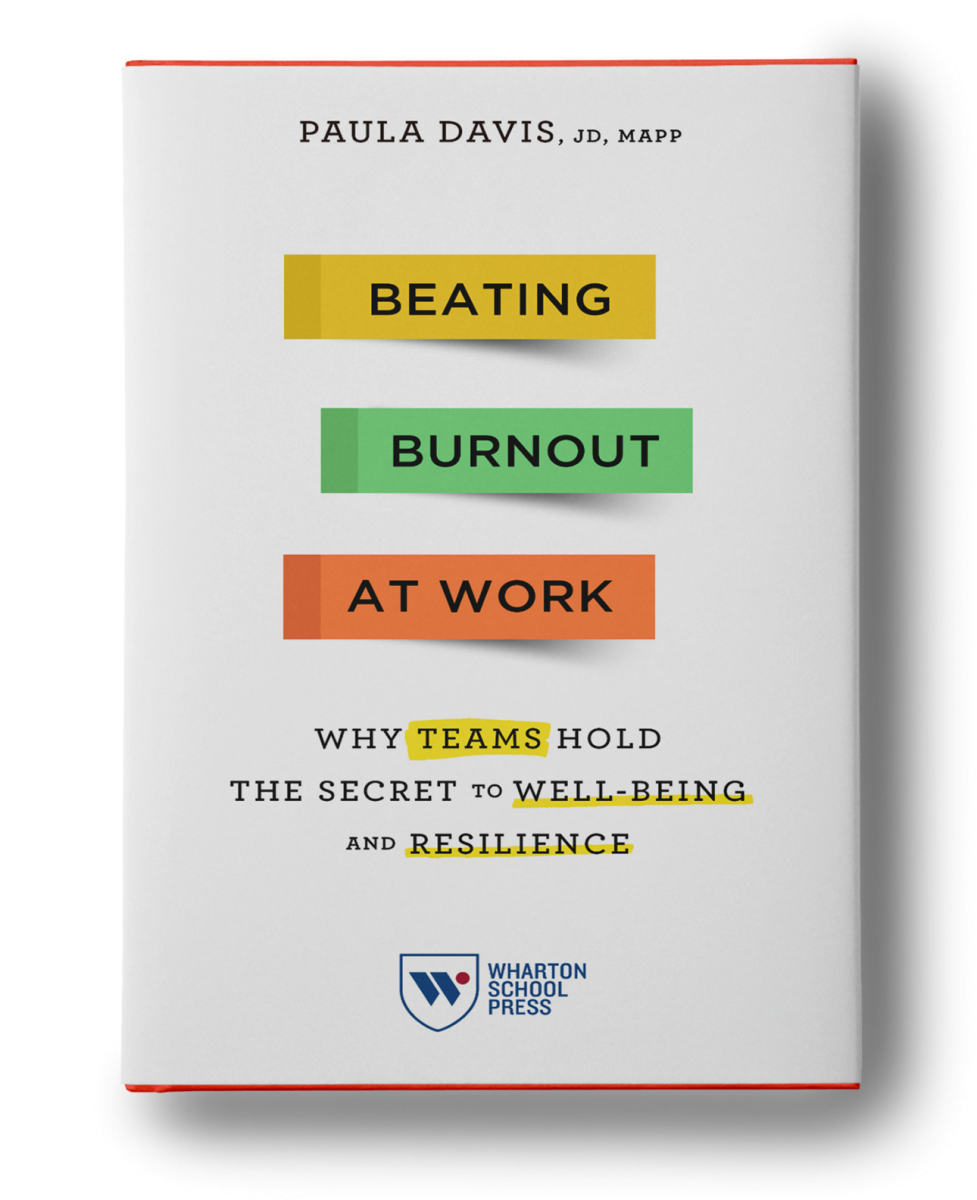This is a challenging time for leaders in a number of different professions. Organizations and business practices are changing rapidly, generating increasing amounts of stress. In healthcare, medical practices are consolidating, use of electronic health record technology has dramatically increased the clerical burden for providers, and staffing is increasingly difficult with national shortages of physicians and nurses in certain specialties. In the legal profession, clients are demanding new billing arrangements and different methods for getting legal work done, and attorneys are demanding more flexible work arrangements. This has given rise to alternative organizational models like secondment firms and virtual law firms. Generally, leaders are faced with managing an inter-generational workforce and many companies (particularly law firms) continue to find it difficult to retain talent, especially women.
These and other challenges make burnout an issue companies increasingly face; however, there is a strong business case for reducing burnout and increasing engagement, and it’s easier and more cost effective than you might think. Burnout at work contributes to decreased well-being, lower retention rates, higher staff turnover, low morale and a lack of cohesiveness in the organization as a whole. One study showed that for each one point increase in a person’s exhaustion score on the Maslach Burnout Inventory (“MBI”), there was a commensurate 5% increase in the likelihood of that person reporting an error; for each one point increase in a person’s cynicism score on the MBI, there was a commensurate 11% increase in reporting an error.
Leaders should focus on both organizational and individual factors with a recent meta-analysis suggesting that the benefits derived from individual programs would get a boost by also adopting organizational-directed approaches. Six organizational-directed approaches that have been shown to build well-being and reduce burnout are as follows:
1. Acknowledge the problem and measure it. I get mixed reactions from leaders when I tell them I talk about burnout. Some want me to share all that I know on the spot, while others worry that bringing up the topic will somehow send the wrong message to employees. Guess what? Burnout is happening in your organization whether you want to admit it or not, so not doing anything about it isn’t helping solve the problem. Acknowledging the problem of burnout and showing that the firm cares about employee well-being is a necessary first step toward making progress. Burnout is very easily measured with a short inventory called the Maslach Burnout Inventory. In addition, there are many good tools in organizational science to measure engagement, well-being, and their constituent components.
2. Utilize the power of leadership. Leadership behaviors of supervisors play a critical role in the well-being of the people they lead. A recent study of more than 2,800 physicians (who were asked to rate their immediate supervisor) at Mayo Clinic found that, “each one-point increase in the leadership score of a physician’s immediate supervisor was associated with a 3.3% decrease in the likelihood of burnout and a 9.0% increase in satisfaction.
3. Focus on providing these job resources. Job resources are the motivational aspects of a person’s job that are energy-giving. Leaders should focus in these areas:
- Increase autonomy
- Foster high-quality connections with colleagues
- Create opportunities for excellence (people want to be both challenged and part of something meaningful)
- Offer fast feedback that is frequent, accurate, specific and timely
- Maximize leader support
4. Minimize these job demands. Job demands are the aspects of your work that take sustained effort and energy. Not all job demands are created equal, and the research points to three specific ones to be minimized because they accelerate burnout and kill engagement:
- Role conflict (“I have received conflicting requests from two or more people”)
- Role ambiguity (“My duties and work objectives are unclear to me”)
- Organizational constraints/unfairness (“I had to go through many hassles to get projects/assignments done”)
According to a survey of over 400 attorneys who have left at least one legal employer, respondents said that a company’s culture can make or break a firm’s ability to retain associates. After time demands, “toxic culture was the most common reason people cited for leaving their law job.” Popular themes from the survey were lack of collegiality, absence of transparency, bias, and lack of kindness and respect – all of which are known job demands that accelerate burnout.
5. Promote work-life integration. Many organizations have implemented reduced-hours policies, but the success has been mixed. The stigma attached to working part time is a real barrier – nearly 74% of attorneys who said they tried working part-time felt stigmatized in some way. In addition, hours worked often exceeded agreed upon thresholds. In my work with the military, one of my favorite programs was the resilience training provided to spouses. Organizations could very easily open up new types of programs to significant others and other important people in their employees’ lives, signaling that they about the person as a whole.
6. Provide resources to promote resilience. Resilience has been identified as an important personal resource to help people prevent burnout and simply manage the day-to-day stress of working in a tough profession. Resilience can be taught, and is built through a set of core competencies that enable mental toughness and mental strength, optimal performance, strong leadership, and tenacity (resilient people give up less frequently when they experience setbacks).
Mayo Clinic implemented a number of these organizational strategies and measured their efficacy over a two-year period. What they found is that the burnout rate of their physicians decreased by 7% despite an 11% rise in the rate of burnout in physicians nationally. Given the strong connection to turnover, absenteeism, rates of errors and disengagement, it makes good business sense for organizations to implement strategies to reduce burnout and build well-being – the time is now.
Please click here to pre-order my new book, Beating Burnout at Work: Why Teams Hold the Secret to Well-Being and Resilience now. It will be available everywhere on March 16.







